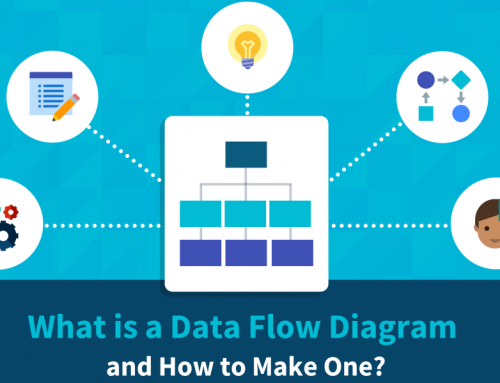Data Lineage Techniques, Best Practices and Tools
What is data lineage? What are the data lineage techniques, best practices, and tools? In this article, we will answer these questions one by one.
Data lineage documents the passage of data through an enterprise’s IT systems, showing how data moves between them, transforming them for different uses in the process. It uses metadata (data about data) to enable end users and data management professionals to track the history of data assets and obtain information about their business significance or technical attributes.
For example, data lineage records can help data scientists, other data analysts, and business users understand the data they use and ensure that it is relevant to their information needs. Data lineage also plays an important role in data governance, master data management, and compliance programs. Among other things in these initiatives, it simplifies two key data governance procedures: analyzing the root cause of data quality issues and the impact of dataset changes.

Data Lineage Techniques, Best Practices and Tools
Data lineage information is primarily collected from operating systems (when processing data), and from data warehouses and data lakes – where datasets are stored for BI and analytics applications. In addition to detailed documentation, data flow diagrams and diagrams can be created to provide a visual view of data lineage mapped to business processes. To simplify end-user access to lineage information, it is often incorporated into a data catalog, which lists data assets and the metadata associated with them.
Why is data lineage important?
Information about data lineage is critical for data management and analysis efforts. Lineage details help businesses manage and use data effectively. Without access to these details, it will be difficult for businesses to fully exploit the potential business value of the data.
The following are the benefits that data lineage provides:
More accurate and useful analysis. By making analytics teams and business users aware of where data comes from and what it means, data lineage improves their ability to find the data they need for BI and data science use faster. This leads to better analytical results and makes data analysis efforts more likely to provide meaningful information to drive business decisions.
Better data governance. Data lineage also helps track data and perform other key parts of the governance process. It helps data governance managers and team members ensure that data is valid, clean, and consistent, and that it is properly protected, managed, and used.
Tighter data security and privacy protection. Businesses can use data lineage information to identify sensitive data that requires particularly strong security. It can also be used to set different levels of user access according to security and data privacy policies, and to assess potential data risks as part of an enterprise risk management strategy.
Improve regulatory compliance. Data lineage provides better security protections, which can help businesses ensure they comply with data privacy laws and other regulations. Well-documented data lineage also makes it easier to conduct internal compliance audits and compliance-level reporting.
Simplify data management. In addition to data quality improvements, data lineage facilitates a variety of other data management tasks. Examples include managing data migrations, breaking down data silos, and detecting and addressing gaps in data sets.
Data Lineage, Data Classification and Data Provenance
Data lineage is also closely related to the two data management processes of data classification and data provenance. Let’s see what they are and how they differ from and relate to data lineage.
- Data Classification. This involves assigning data into different categories based on its characteristics, mainly for security and compliance purposes. Classification is used to classify data according to its sensitivity, for example, as personal, proprietary, confidential, or public information. Doing so separates datasets that require higher levels of security and tighter access controls from those that don’t. Data lineage provides information about a dataset that helps to classify it.
- Data provenance. It is sometimes considered synonymous with data lineage, or data provenance is seen as a more narrow focus on the provenance of data, including its source system and how it was generated. In this case, data lineage and data provenance can work together, with the latter providing high-level documentation on where the data came from and what it means.
Data Lineage and Data Governance
The essence of data governance is creating corporate data policies and ensuring that people adhere to those policies. Such policies can span intent and include directives regarding data protection, verification and use. Data governance managers and data stewards must gather the data needs of business users and work with members of the decision-making data governance committee to agree on common data definitions, specify data quality metrics, and develop policies and related procedures.
However, there is a gap between defining data governance policies and deploying them, and bridging this gap is a huge challenge. This is where data lineage comes in. It documents data sources and flows, enabling governance teams to monitor how data moves through the system and how it is modified and used. Lineage information helps them ensure appropriate data security and access controls are in place, and store, maintain, and use data in accordance with governance policies.
Data lineage can also simplify specific tasks related to governance. For example, without a way to determine where data errors were introduced into the system, it can be difficult for data stewards and data quality analysts to identify and fix them. This has consequences: If data flaws are not discovered, businesses can be plagued by inconsistent or inaccurate analytical results, leading to bad business decisions.
In the root cause analysis of data errors, lineage records provide visibility into the sequence of processing stages a data set has gone through. Businesses can check quality levels at each stage to identify sources of data errors. Working backwards from where the error was first discovered, data stewards can check whether the data meets earlier expectations or contained errors at the time. By pinpointing the stage where data is compliant at entry but flawed at exit, staff involved in a data governance program can eliminate the root cause of errors, not just correct bad data.
Data lineage is also useful when performing impact analysis to grasp problems caused by changes in source data format and structure, a common problem in today’s increasingly dynamic data environment.
When data changes, there can be unintended consequences downstream. By working from the point of data creation or collection, data stewards can rely on data lineage documentation to help track data dependencies and identify processing stages affected by changes. These stages can then be redesigned to accommodate changes and ensure data remains consistent across systems.
Key Data Lineage Techniques
Businesses can use a variety of techniques to collect and record data lineage information. They are not necessarily mutually exclusive, and businesses may use more than one lineage technology, depending on their application requirements and the nature of their data environment. Available methods include:

Data Lineage Techniques, Best Practices and Tools
Key Data Lineage Techniques – 1. Data tag. By examining metadata, labels can be applied to datasets to help describe and characterize them for data lineage purposes. Tagging can be done manually by data stewards, other data governance team members, and end users, or automatically by software. For example, data lineage tools and lineage capabilities built into data governance software often include automated algorithms—that users can run to label datasets.
Key Data Lineage Techniques – 2. Pattern-based lineage. This approach looks for patterns in multiple datasets, such as similar data elements, rows, and columns. Their presence indicates that data sets are related to each other and may be part of a data flow, while differences in data values or attributes indicate that data was transformed as it moved from one system to another. Data transformations and data flows can then be recorded as part of a data lineage record.
Key Data Lineage Techniques – 3. Parse-based lineage. In this case, data lineage tools parse data transformation logic, runtime log files, data integration workflows, and other data processing code to identify and extract lineage information. Parsing provides an end-to-end approach to tracking data lineage in different systems and can be more accurate than schema-based lineage, but also more complex.
Key Data Lineage Techniques – 4. Another approach is completely manual: interview business users, BI analysts, data scientists, data stewards, data integration developers, and other staff to understand how data moves through the system and is used and modified. The information gathered can be used to map data flows and transformations, perhaps as a starting point for data lineage planning before deploying more automated techniques.
Data Lineage Best Practices
Here are some best practices to help keep the data lineage process on track and ensure it provides accurate and useful information about your dataset:
- Involve business executives and users from the start. A data governance program requires executive support and involvement to be successful, and the same applies to data lineage. Access to senior management support is a requirement for approval and funding. Business managers and employees should also be involved to ensure that data management teams fully understand how data is used in business processes and to verify the relevance and validity of data lineage information.
- Document business and technical data lineage. Business lineage pays close attention to where data comes from, how it flows, and its business context. Technology lineage provides details on data transformations, integrations, and pipelines, as well as a combination of table, column, and query-level lineage views. Gathering these two pieces of information provides useful information to business users and analysis teams on the one hand, and to data architects, data modelers, data quality analysts, and other IT professionals on the other.
- Correlate data lineage to actual business and IT needs. Data lineage should not be an academic exercise. To generate the expected benefits, it needs to help enable better business decisions and strategies, as well as more effective data governance, improved data quality, and other data management benefits. Otherwise, it’s likely to be a wasted investment.
- Deploy an enterprise-wide approach to data lineage. Also focusing on the data lineage process for certain datasets is not as useful as it might be. To really pay off, it should be a comprehensive effort involving all of the enterprise’s data, with a single metadata repository supporting the lineage effort.
- Create a data catalog that contains embedded data lineage information. Finding and understanding relevant data is often a huge challenge for BI and analytics users. By building a data catalog, data management teams can provide them with an inventory of available data assets, which also includes lineage information.
What to look for in a data lineage tool?
Manually collecting metadata and documenting data lineage requires a significant investment of resources. It’s also error-prone and can cause big problems, especially as businesses increasingly rely on data analytics to drive business operations. Therefore, to do a better job of data governance, one should look for tools to manage data lineage representations and map them automatically across the enterprise.
If you decide to move forward with the technical evaluation process for a possible purchase, you should look for data lineage tools that can:
- Locally access a wide range of data sources and data products, investigate the metadata they contain and collect it for data governance, increasingly through the use of artificial intelligence and machine learning algorithms;
- Aggregate captured metadata into a centralized repository;
- Infer data types and match common uses of reference data to data elements from different systems;
- Provide end users with a simplified presentation of aggregated metadata and support collaboration to validate metadata descriptions;
- An end-to-end mapping of how data flows through an organization’s systems;
- Generate a visual representation of data lineage;
- Provides an API so that developers can build applications that can query lineage records;
- Create inverted indexes that map data element names to their uses at different stages of processing;
- Provide search capabilities to quickly trace the flow of data from a data source point to a downstream target;
- Enables users to monitor forward and reverse data flow.
Conclusion
Thank you for reading our article and we hope it can help you to have a better understanding of data lineage techniques, best practices and tools. If you want to learn more about data lineage techniques and tools, we would like to advise you to visit Gudu SQLFlow for more information.
As one of the best data lineage tools available on the market today, Gudu SQLFlow can not only analyze SQL script files, obtain data lineage, and perform visual display, but also allow users to provide data lineage in CSV format and perform visual display. (Published by Ryan on Aug 8, 2022)
If you enjoy reading this, then, please explore our other articles below:



